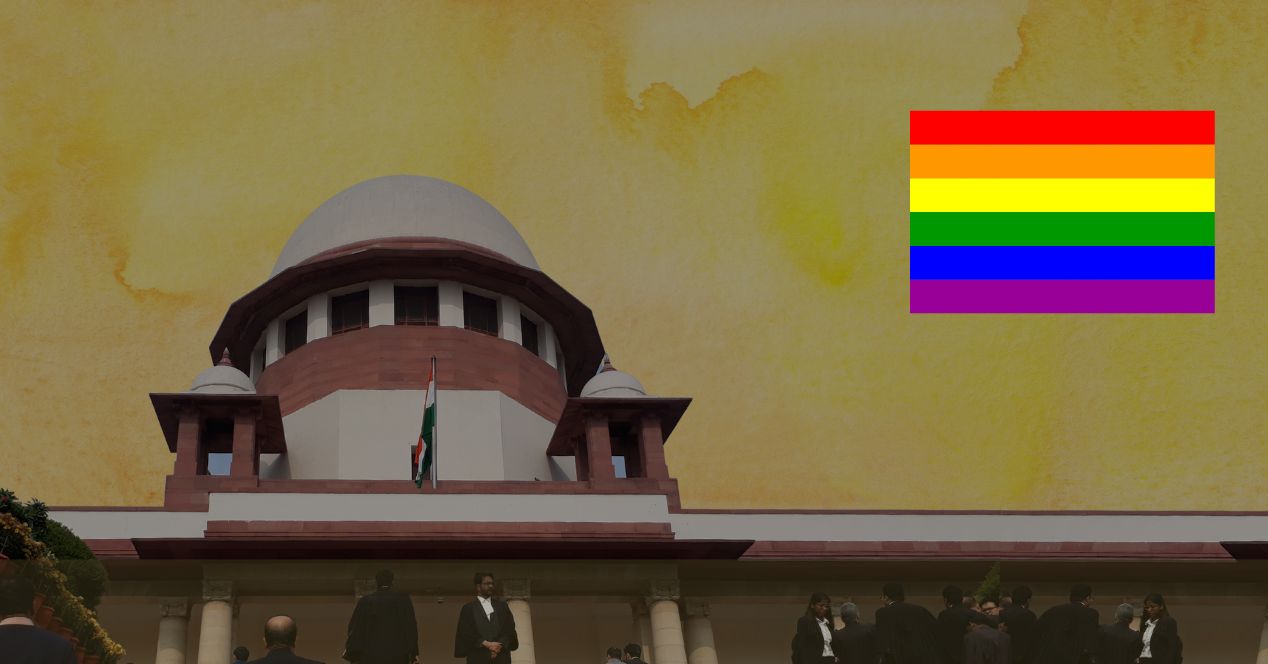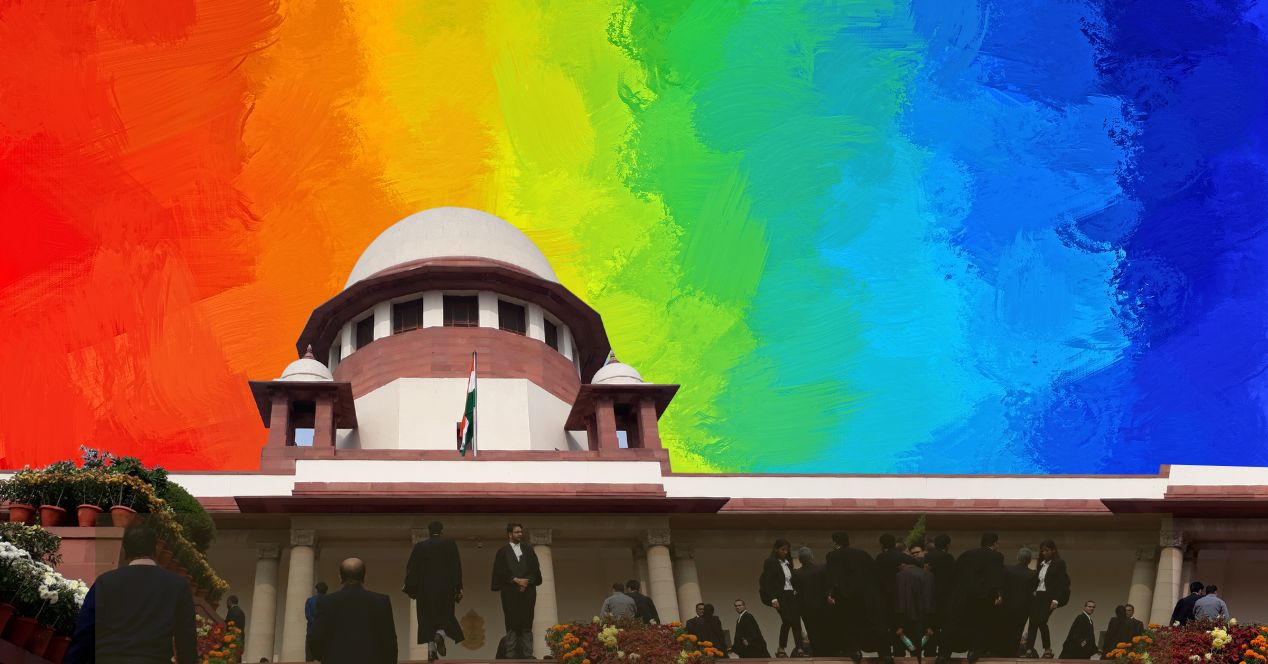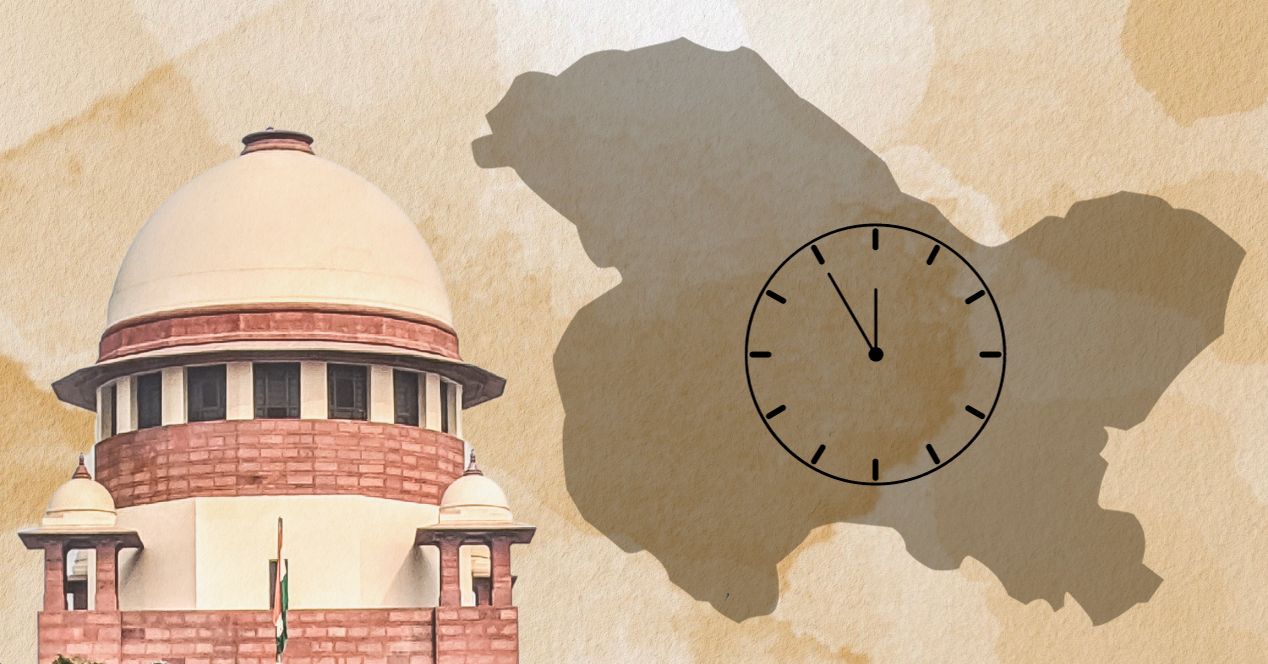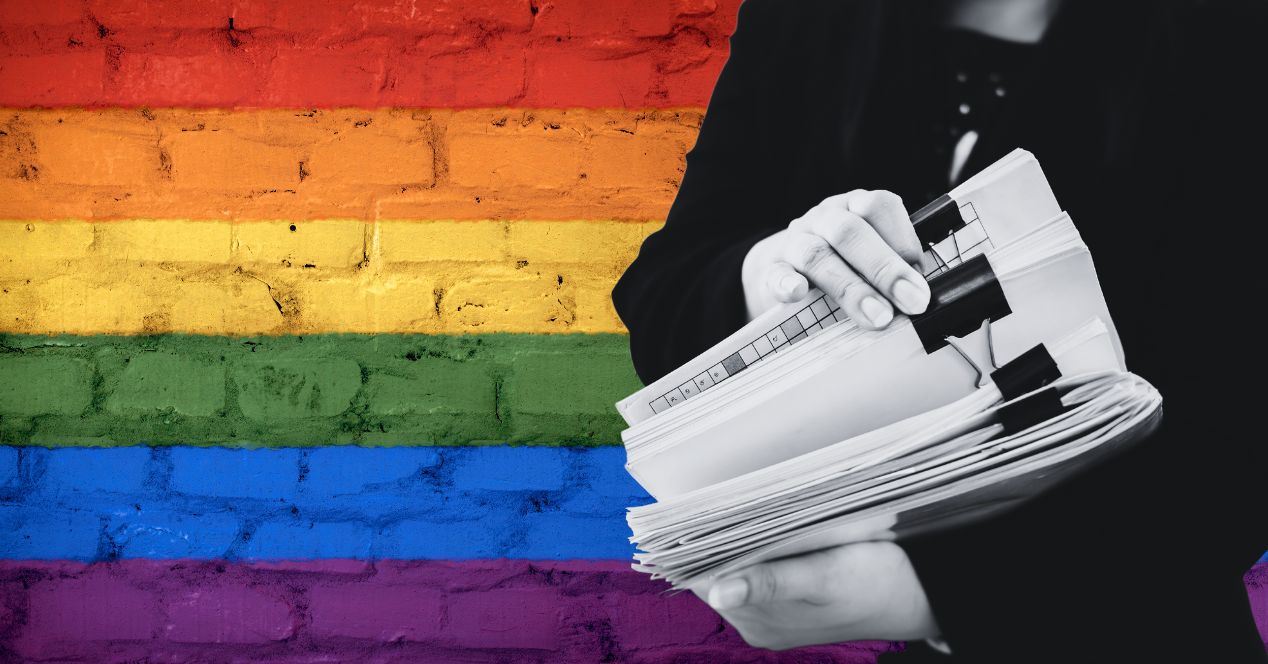Channel
SCO Explains: The plea for marriage equality judgement
A five-judge bench rejected the plea for queer persons right to marry in India. What did the Court say?
Transcript:
Gauri Kashyap: Hello everyone! Welcome to SCO Explains. Today we’ll be briefly breaking down the Supreme Court’s Judgement in the plea for marriage equality for queer persons.
R. Sai Spandana: On 17 October 2023, the Supreme Court rejected the plea for queer persons’ right to marry in India. The five-judge Bench unanimously agreed that there is no fundamental right to marry, and that marriages between queer persons cannot be read into the Special Marriage Act, 1954. All five judges also agreed that transgender persons in heterosexual relationships have the right to marry under the existing legal framework.
Further, in a 3:2 majority, the bench held that same-sex couples did not have the right to form civil unions, and that they could not adopt.
Gauri Kashyap: Four opinions were written in this judgement, by Chief Justice D.Y. Chandrachud, Justices S.K. Kaul, S.R. Bhat who wrote for himself and on behalf of Justice Hima Kohli and Justice P.S. Narasimha.
One thing that stood out in this case is that the Chief Justice was in the minority. This is not typically the case. Research suggests that the Chief Justice has been in a minority in a Constitution Bench case only about 13 times. In the past decade, the Chief Justice has been in the minority in a Constitution Bench three times—in the challenge to triple talaq (2017), reservations for Economically Weaker Sections (2022) and the present case.
R. Sai Spandana: Let’s quickly dive into the highlights from the judgement. We’ll begin with whether there is a fundamental right to marry.
[transition slide]
R. Sai Spandana: All five judges agreed that there was no fundamental right to marry. CJI Chandrachud held that though the Constitution does not expressly recognise this right, the state is obligated to create an institution where queer couples can enjoy the benefits of marriage. He said that queer couples have a right to union, and that a separate institution, like marriage, could be recognised in a ‘civil union’. We’ll get into what the judges said on civil unions in detail in a bit.
Gauri Kashyap: Justice S.R. Bhat agreed with the CJI. He held that marriage has existed before the formation of a state, which means that its source is not from law, but from society itself. If there was in fact, a fundamental right to marry, it would have to be brought to the levels of other rights in Part III of the constitution (which deals with fundamental rights). But unlike other rights protected in Part III, marriage is a “personal preference” which “confers social status”, it is not “enforceable rights, which the courts can compel the state or governance institutions to provide.” Justice Narasimha added that marriage is a fundamental freedom, not a right.
So then do queer persons have a right to enter into a civil union?
[Transition slide]
R. Sai Spandana: CJI Chandrachud was in the minority in holding that queer couples have a right to enter into a civil union. He observed that “the right to enter into a union includes the right to associate with a partner of one’s choice.” “For the full enjoyment of such relationships”, he said, it is necessary that the State accord recognition to such relationships”
Justice S.K. Kaul agreed with the Chief and stated that the right to form a “civil union” is a feature of Article 19 and Article 21.
Gauri Kashyap: Leading the majority opinion on this question, Justice Bhat agreed only partially with the CJI. While he held that “all queer persons have the right to relationship and choice of partner, cohabit and live together, as an integral part of choice” he disagreed with the reasoning that a right to form a civil union in the form of a new law must exist. “Ordering a social institution” would require a completely different legal framework with a “new universe of rights and obligations.” This would require a separate regime for registration of the civil union, laying down the conditions of a valid union, setting eligibility, age, restrictions, divorce, alimony and a bouquet of other rights that are ancillary to marriage. The state is not obliged to recognise this “bouquet of entitlements,”Justice Bhat noted
R. Sai Spandana: The next big focus in this case was the Special Marriage Act, 1954. On the SMA, there were two key contentions. First, that the SMA was unconstitutional for violating the right to equality as it failed to recognise the non-heteronormative marriages. Second, that the Court must adopt a “gender neutral interpretation” which includes nonheterosexual couples under the Act. So, for instance where it says man and woman in the provision it should be read as spouse. Let’s deal with each issue one by one.
Is the Special Marriage Act, 1954 unconstitutional for excluding non-heterosexual couples?
[Transition Slide]
CJI Chandrachud held that declaring the provision unconstitutional would diminish the purpose of the “progressive legislation” that the Act incorporates.. The SMA, he reasoned, was enacted to bolster interfaith and inter-caste relationships. Therefore, declaring it “void” would “take India back to the pre-independence era” where inter-caste and inter-faith marriages were impermissible.
In contrast to the Chief’s opinion, Justice Kaul held that the SMA was violative of Article 14 as it discriminates against non-heterosexual couples. He saw that there is a clear distinction between non-heterosexual and heterosexual persons under the SMA, he held that there is no reasonable explanation for drawing that distinction. The intent of the SMA, he said, is to facilitate inter-faith marriages, had no “nexus” with the exclusion of non-heterosexual couples.
Gauri Kashyap: Justice Bhat wrote that the classifications made in a law must be understood in the context of the objectives of that law. Relying on precedents, he wrote that unless the excluded category in any classification belongs to the included class, it does not amount to exclusion. Justice Bhat noted that the “sole intention” of the SMA was to “facilitate marriage between persons professing different faiths”. At the time that the law was made, consensual sexual relations between persons of the same sex remained prohibited. Moreover, it was not the focus of the law. Therefore, he reasoned that “as long as an objective [of a law] is clearly discernible, it cannot be attacked merely because it does not make a better classification.”
So then, can the right to marry be read into the provisions of the Special Marriage Act, 1954?
[Transition Slide]
R. Sai Spandana: All five judges agreed on this question, and held that marriages between queer persons cannot be read into the Special marriage act.
CJI Chandrachud held that, adding, deleting, or substituting words in Section 4 would lead to replacing or deleting words in other provisions of the SMA, and several other legislations such as the Hindu Succession Act, the Indian Succession Act etc. This would “in effect be entering into the realm of the legislature”. This he stated, would essentially violate the doctrine of separation of powers.
Though Justice Kaul held that the SMA violates Article 14, he agreed with CJI Chandrachud that there are “multifarious interpretive difficulties” when it comes to including non-heterosexual persons under the SMA. He accepted the Unions arguments that “tinkering with the scope of marriage under the SMA can have a cascading effect across disparate laws”.
Gauri Kashyap: Justice Bhat wrote that “Parliament intended only one kind of couples, i.e., heterosexualcouples belonging to different faiths, to be given the facility of a civil marriage” under the SMA. The law cannot be interpreted in a way that is “conceptually different from what…Parliament must have intended.”
Further, Justice Bhat warned that a gender neutral interpretation of the SMA would “complicate an already exhausting path to justice for women and leave room for the perpetrator to victimise them.” A gender neutral reading of the SMA would also impact gender specific aspects of the statute. For instance, separate legal age for marriage for men and women, remedies for divorce and maintenance would pose serious challenges under a gender neutral construction.
R. Sai Spandana: The focus of the case then shifted to adoption. On this, the Bench split 3:2, with the majority holding that queer persons cannot adopt under the existing framework of law.
[Transition slide]
Petitioners had challenged the Regulation 5(3) of the 2020 of the Central Adoption Resource Authority Guidelines which restricts adoption to single individuals and married couples who are in a stable marital relationship for two years. Further, Section 57(2) of the Juvenile Justice (Care and Protection of Children) Act, 2015 (JJ Act) mandates that both spouses had to consent for adoption.
CJI Chandrachud held that the regulation violates Articles 14 and 15 of the Indian Constitution as it discriminates against unmarried couples. He highlighted that the Regulation treats marriage as a “yardstick” to classify stable couples who are considered fit to “ensure the best interest of the child”. Chief Justice stated that the Union had placed no data “to support their claim that only married relationships can provide stability”.
Gauri Kashyap: Justice Bhat led the majority and held that the Juvenile Justice Act makes it clear that adoption only concerns joint adoption by married couples. Reading both married and unmarried couples into the provision “is not based on any known principle of interpretation,” he said. The law is designed this way keeping in mind the “best interest of the child” to protect it from instances where the marriage has broken down. As the JJ Act only enables adoption, marriage becomes a key prerequisite to attract protection from laws on divorce, custody, guardianship, maintenance, succession, among others. This framework ensures that if one parent abandons the relationship, the other can maintain themselves and the child—a remedy that a couple with no legal recognition is deprived of. Justice Bhat clarified that though a married couple is not a “morally superior choice” for parents, the adoption framework takes into account the “protections and entitlements, [which] flow from the institution of marriage.” The “guiding principle” of the JJ Act is the best interest of the child, “not to enable adoption for all”, he held.
However, Justice Bhat recognised that in the absence of legal recognition of queer couples that they have no option but to adopt individually. This would mean that neither the parents nor the child will enjoy any legal protections. He said that the state needs to “ensure that the maximum welfare and benefits reach the largest number of children in need of safe and secure homes with a promise for their fullest development.”
R. Sai Spandana: The next question that the bench dealt with concerned the rights of transgender persons in heterosexual relationships to marry. All five judges agreed on this point.
[Transition slide]
CJI Chandrachud held that a transgender person in a heterosexual relationship is entitled to marry after a “harmonious interpretation” of existing marriage laws and the Transgender Persons Act, 2019. He reasoned that marriage laws in India permit marriages arising out heterosexual relationships. The existing laws such as the SMA or other personal laws describe a marital relationship between a “man” and a “woman”, “husband” and a “wife”, “bride and a bridegroom”. If this is restricted, it would violate the Transgender Persons Act which prohibits discrimination of transgender persons. Further, he stated that a person is a transgender person by “virtue of their gender identity”, and it is not their “sexual orientation”.
Gauri Kashyap: In a little over 150 words, Justice Bhat concurred with the CJI, declaring the Madras High Court’s judgement in Arun Kumar v. Inspector General of Registration (2019) as “correct analysis”. In Arun Kumar, the Madras High Court had held that a marriage solemnised between a male and a transwoman, both professing Hindu religion, was a valid marriage.
With this we wrap up the key points in the marriage equality Judgement. Visit SCobserver.in for our Judgment summary and matrix, and for reports on all the days of the hearings in one place. Thank you for watching!




